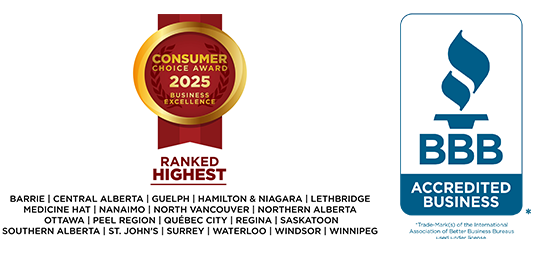If you’re facing financial difficulty and want to find solutions, we recommend visiting our website at MNPdebt.ca. Our website offers powerful tools and valuable information to help you understand the various options available and estimate the monthly payments associated with each option.
Explore our Debt Calculator or Debt Scale tools for a clearer picture of potential Bankruptcy or Consumer Proposal payments, or to assess your risk of becoming insolvent.
Debt Calculator
MNP’s Debt Calculator considers the value of your assets and outstanding debts, along with interest rates and repayment schedules. The tool helps you determine your options, understand timelines, and assess the costs applicable to each option.
Visit the MNP Debt Calculator, select the province you live in and enter your current financial information.
Here’s how to proceed:
Field 1: What assets do you own?
- Home (principal residence)
- Fill in the estimated fair market value of your home.
- Provide the balance remaining on your mortgage.
- Indicate the percentage of ownership you have (If you’re the sole owner of your house, enter 100 percent or if you co-own the house with someone like your spouse, enter the percentage that applies to you).
- The tool will automatically calculate your “Realizable Value” if you have equity in your home and take hypothetical selling costs into account. If there is no equity in your home, the value will remain at 0.
- Other land / property
Follow the same steps as above if you have a secondary home, a cottage, or land.
- Vehicles 1 and 2
- Fill in the estimated “black book value” of your vehicle(s).
- Provide the balance remaining on your financing agreement.
- Indicate the percentage of ownership for each vehicle (Enter 100 percent if you are the sole owner or the applicable percentage if you co-own the vehicle).
- Keep in mind that if you have co-signed on a vehicle loan for somebody else, you may not physically possess the vehicle or be on the registration documents, but the bank still considers you an owner.
- Also, consider any recreational vehicles you may have, such as motor homes, motorcycles, or all-terrain vehicles.
- Investments (non-RRSP)
- Fill in the estimated value of any investments you may have, such as a Tax-Free Savings Account (TFSA), Registered Education Savings Plan (RESP), life insurance, or pension.
- Use the Loan section only if you borrowed from a life insurance policy.
- Note that most investments are owned 100 percent, except for RESPs.
*Move on to the Income section if you don’t own a house, car, or have any investments.
Field 2: What is your monthly income?
- When filling in your income details, consider variations in months when you receive three paychecks, potential bonuses or commission, and anticipated Employment Insurance (EI) benefits.
- Exclude the Canada Child Benefit from your income calculation.
- If you have a spouse or another contributing member in your household, fill in the appropriate information for them.
- Indicate the total number people living in your household, including spouses, children, or other dependents.
This information is important because the Office of the Superintendent of Bankruptcy (OSB) sets an income standard based on the number of people in your household. It determines how much money you’re allowed to make per month. If your average monthly income exceeds the income standard by at least $200 on average each month, you may have what is known as “surplus income”. The surplus income will be considered when determining the debt solutions that are best for you.
Field 3: How much debt do you have?
- What is the total of your unsecured debts?
Provide the total estimated amount of your unsecured debt. Unsecured debt is any debt that is not tied to an asset. Examples include credit cards, income tax owed, and personal or payday loans.
- Have you ever filed a personal Bankruptcy in Canada?
Only select YES if you have filed a Bankruptcy or Consumer Proposal in Canada before.
Your Personalized Debt Solutions chart will now show cost comparisons for each debt solution.
The green columns represent the estimated monthly payment required.
The blue columns represent the total estimated amount you’ll need to pay, based on the information you provided.
We recommend speaking with a Licensed Insolvency Trustee (LIT) at MNP LTD for a comprehensive review of your financial situation and a full range of available debt relief options.
Your Debt Solutions and How They Work
Click on each option to read a brief description of each debt solution.
Calculator Parameters
The chart displays the expected length and yield (estimated return to your creditors)
By completing the intake form, your local MNP office will receive your results, and we will be in touch within one business day to arrange a Free Confidential Consultation to help find a Life-Changing Debt Solution that is specific to your needs.
Debt Scale
Take our quick 14-question survey to learn more about your debt health, take control over your finances, or start your journey to getting professional help.
Visit our Home Page, click the Resources tab where you’ll find the MNP Debt Scale, and click “Take the MNP Debt Scale Assessment” to begin. The assessment consists of a 5-part questionnaire with Yes or No questions. This helps us understand your financial situation and repayment abilities.
Fill in the intake form to instantly receive your risk level results by email. A scale from 0-140 determines your risk of being in poor debt health:
| 0-4 |
Low |
| 40-80 |
Moderate |
| 80-110 |
High |
| 110-140 |
Extreme |
In the email, you’ll have the option to schedule a Free Confidential Consultation with a LIT. Contact MNP LTD if you’d like to learn more about your risk level and what those factors mean for your financial situation.



